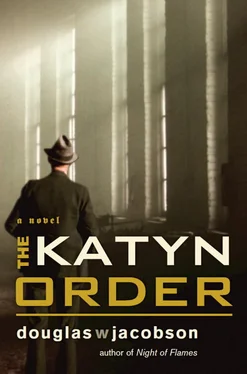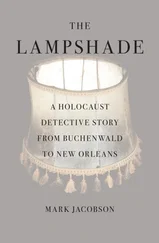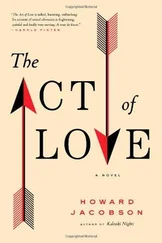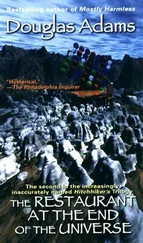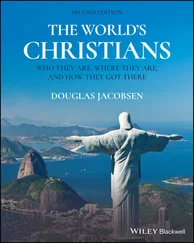Today I discovered the “solid evidence” Hans Frank boasted about back in April of 1943. It is a carbon copy of a single document authorizing the massacre in the Katyn Forest! I found it neatly folded in a non-descript envelope intermixed with dozens of other envelopes and file folders in the final box of documents left on the table in room L-3.
I was just in time. The Nazi occupiers are cleaning out everything: their headquarters at Wawel Castle, their personal homes and apartments, even the storage rooms at the library. The streets of Krakow are clogged with all manner of German vehicles piled high with furniture, silverware, paintings and rolls of carpets—rats hoarding their booty before jumping ship as the Red Army closes in. But what is to become of us?
16 January 1945
The Nazis are gone—just like that, Hans Frank among them—in a frenzied exodus from the city. After more than five years, the streets of Krakow are now devoid of the black uniforms of the SS and the green uniforms of the Feldgendarmes. It will be several days, I’m told, before the khaki uniforms of the Red Army and NKVD fill these same streets. I will not be here to see it.
When I removed that document from that final box in room L-3, I instantly knew that this was what Frank had alluded to—the proof he had received from his Russian visitor.
And I knew why I had survived. I must make sure this piece of evidence is shown to the people of the world, that they may see the true nature of Stalin and his henchmen—barbarians every bit as evil as the Nazis they have just defeated. Perhaps this damning evidence, exposed in the court of world opinion, will convince the Americans and British to stand up to Stalin and deny his ruthless ambitions for Poland.
I have translated the document. It took more than two hours, and when I finished I was shaking so badly I dropped the thin piece of paper on the floor. I picked it up and read it a second time, scarcely able to believe that such a thing would ever be put on paper.
The translation of the entire document is too long to include in this journal, but this is the essence of its contents:
On 5 March, 1940, at the request of NKVD Commissar Lavrenty Beria, an order was signed by Joseph Stalin and every other member of the Soviet Politburo, authorizing the execution of twenty-seven thousand Polish “nationalists and counterrevolutionaries.” The various groups of Poles and their places of execution were itemized—including the four thousand officers of the Polish army whose graves were discovered by the Germans in the Katyn Forest.
17 January 1945
I need worry no longer about the safety of my beloved Beata. Before departing yesterday, Herr Kruger did me one last service and told me the truth. Beata died more than two years ago at the concentration camp at Dachau. Though hearing of her death ripped my soul apart, I was not surprised. I realize that all of Frank’s comments about Beata returning were designed to keep me in a state of perpetual fear and to prevent me from communicating with anyone. I only thank the Lord that she is at peace. I asked Herr Kruger about the whereabouts of my nephew, Adam, but he was not able to furnish any information.
Now, I have but one last thing for which to live. This will be my final entry of the journal. I have been up all night, and I know what I must do. The copy of Stalin’s order authorizing the massacre in the Katyn Forest must not fall into Russian hands.
To whoever reads this journal: find Adam Nowak and tell him that we shall never be pathetic pawns on the perilous chessboard of the NKVD.
Ludwik Banach Professor of Law, Jagiellonian University Member, Polish Bar Association
The incident that has become known as the Katyn Massacre was, without a doubt, one of the most heinous war crimes ever committed. More than twenty thousand Polish Army officers and civilians were secretly murdered by the Soviet NKVD during April and May of 1940. The murders were actually carried out at several different sites in Russia.
In addition to the Katyn Forest near Smolensk, where the graves of more than four thousand Polish officers were discovered, at least three thousand persons were murdered at a secret camp near Starobelsk, six thousand at a camp near Ostashkov, and as many as fourteen thousand at other places of detention. In addition to army officers, the victims included chaplains, university professors, physicians, lawyers, engineers, teachers, writers and journalists.
This unprecedented crime was initially discovered by the German Wehrmacht as they advanced through Russia in April 1943. The Soviet Government denied any knowledge of the incident and claimed that the murders had been committed by the Germans.
The Polish Government-in-Exile, and in particular Prime Minister Wladyslaw Sikorski, had been pressing the Soviet Government for years about the apparent disappearance of Poland’s army officers. The discovery of the graves in 1943 heightened the controversy and eventually led to Joseph Stalin’s decision to break off diplomatic relations with Poland. On 4 July 1943, Prime Minister Sikorski was killed in an airplane crash seconds after takeoff from an airfield in Gibraltar. The incident has never been completely explained.
The controversy over the Katyn Massacre continued until 13 April 1990, when Soviet President Mikhail Gorbachev publicly acknowledged the Soviet Union’s responsibility for the murders. On 14 October 1992, fifty-two years after the secret murders were committed, the Soviet Government finally produced the order of 5 March 1940, which authorized the execution of more than twenty-seven thousand Polish “nationalists and counterrevolutionaries,” including the Polish officers in the Katyn Forest. The order was drafted by the Commissar of the NKVD, Lavrenty Beria, and was signed by Joseph Stalin, along with every member of the Soviet Politburo.
The horror of Katyn continues to this day. In April 2010, the president of Poland, Lech Kaczynski, along with his wife and more than ninety other Polish dignitaries, died in an airplane crash in Russia. They were en route to a ceremony commemorating the seventieth anniversary of the Katyn massacre. On 26 November 2010, the Russian parliament officially condemned Joseph Stalin by name for the mass execution of Poles at Katyn. The parliament declared that the Soviet dictator and other Soviet officials had ordered the “Katyn crime” in 1940.
In writing The Katyn Order, I chose to begin the story with another great tragedy of World War Two, the Warsaw Rising of 1944. Like the Katyn massacre, the facts of the Warsaw Rising were suppressed for decades after the war by the communist authorities governing Poland. Consequently, the story of the Rising is not well known in the West, and is often confused with the Warsaw ghetto uprising of 1943. They were, in fact, two completely different events.
By the summer of 1944, it was clear that Germany would be defeated by the Allies. American and British forces were liberating France, Belgium and the Netherlands, while Soviet forces were pushing into Poland. The German Army was in retreat. Having no illusions about what “liberation” by the Soviets would mean for their future, Poland’s home army, the AK, acting on instructions from their Government-in-Exile in London, attempted to seize the opportunity to take control of their capital. What ensued was the Warsaw Rising, a catastrophe of epic proportions, that resulted in the loss of tens of thousands of lives, and the destruction of one of the world’s great cities. Winston Churchill, who agonized over the struggle for Poland’s capital as it unfolded day-after-tragic-day, described it this way in his memoirs:
Читать дальше
